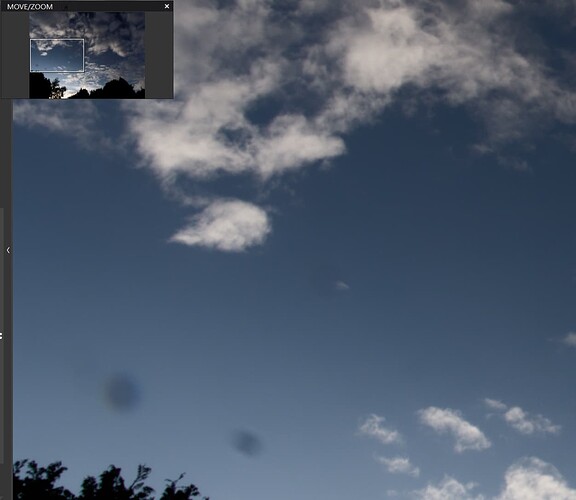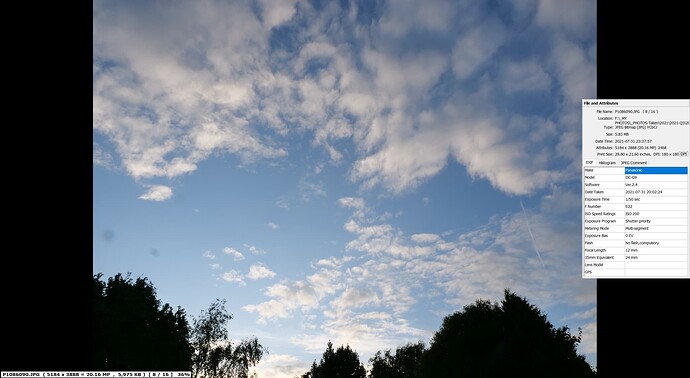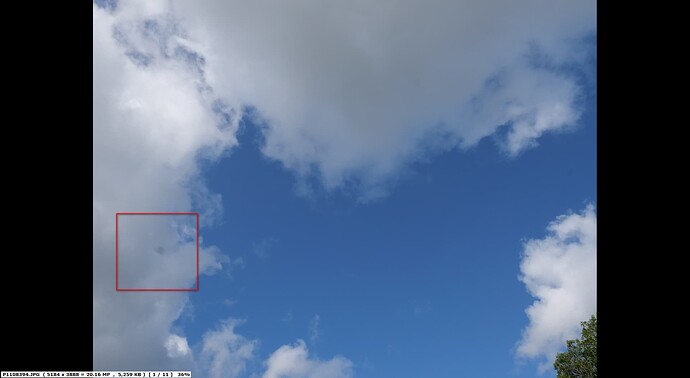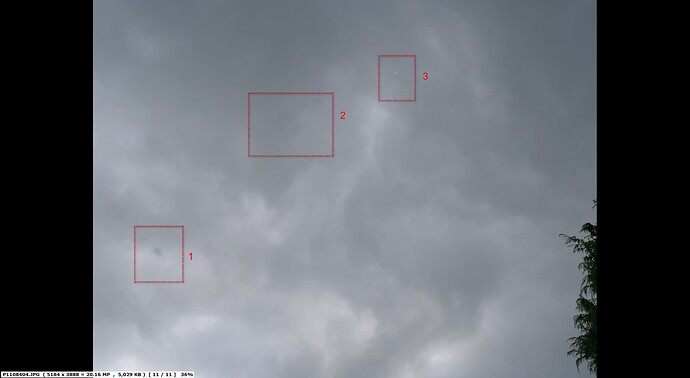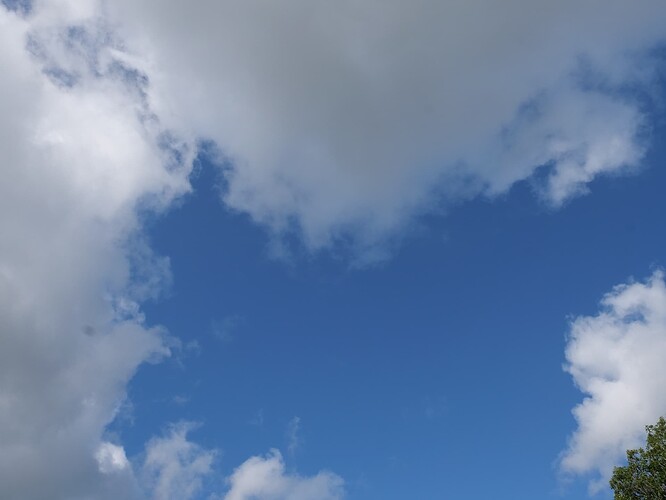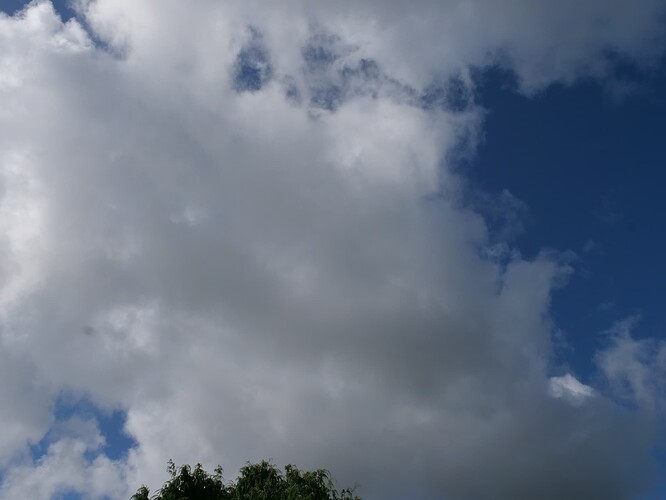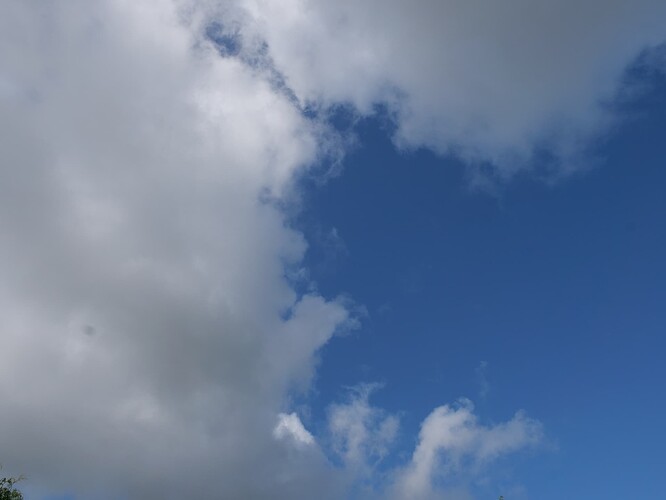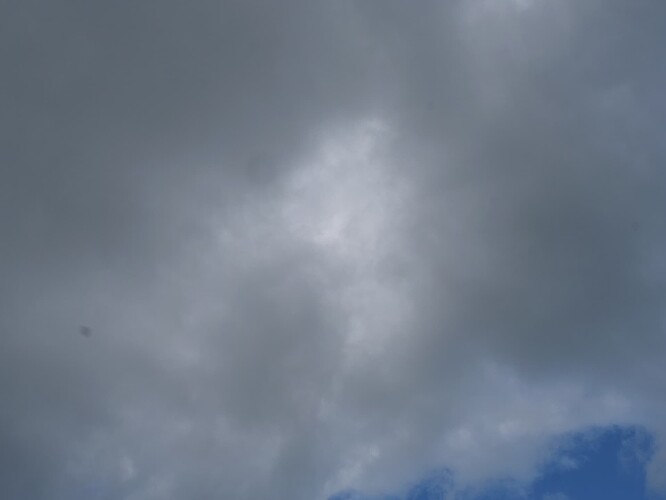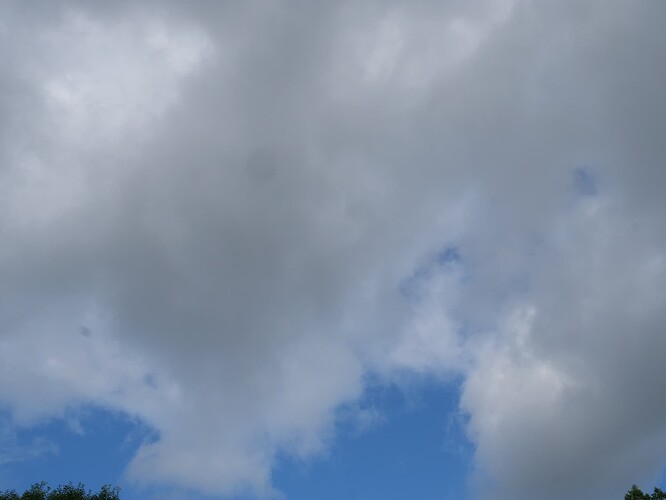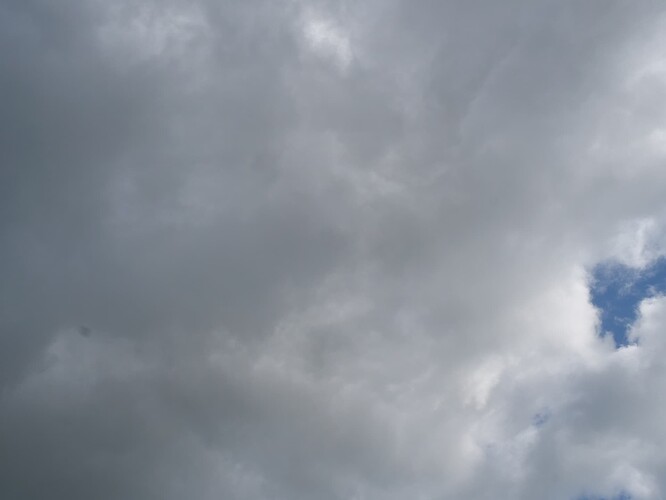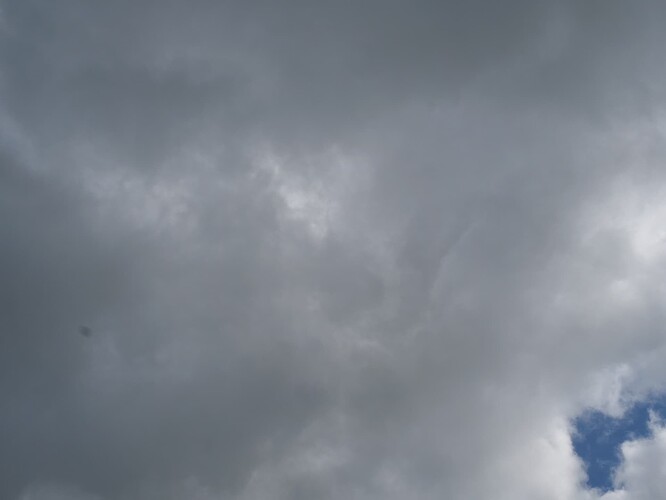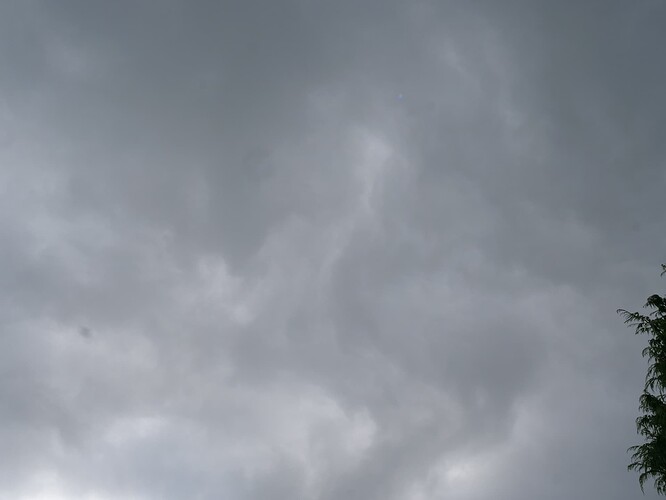I am seeing strange faint ‘dots’ in the sky when I am shooting ships now. They appear in the RAW and Jpeg processed files. I can not see anything on either surface of my lens or sensor, and I brushed and wiped the lens surfaces prior to shooting. Also going f/22 brings them out even more.
Nikon Z 7II
Nikkor Z 24 - 200mm Lens
I worked to bring them out more in this version.
I was thinking about using a lens cleaner with a cloth.
I know such stains and have often had them myself. There were always sensor spots, i.e. contamination from dust.
those are dust spot on your sensor, to best view them you need a loupe so you can get a closer look as they are hard to see with the naked eyes, if you don’t know how to clean the sensor i’d say go to your camera store and they probably can do it for you.
lens won’t leave a spot like this a blurred/smudge effect.
something like this, of course there is many other models and price range =]
https://www.bhphotovideo.com/c/product/1335300-REG/visibledust_19137095_quasar_r_5x_sensor.html
Dust on the sensor, even if you don’t see it with the naked eye. Periodical wet cleaning is recommended!
My products of choice on the Z6: Sensor Swabs and Eclipse fluid. Been using them for 14 years, very easy to do!
Thank you for your replies. I saw some dust on the camera when I first got it and was able to get it off with an air bulb.
I will take it in to Houston for cleaning.
I found a few other spots that were not in the sky. Dirt on the sensor is often easier to find in even toned skies than other areas of an image which contain more complex colors and shapes. When you see a bunch of of them in the sky you can be almost certain that there are also spots in other areas of your images that may be harder to see.
Mark
To see all the spots on your sensor;
-
Set your Aperture to a high number … say, >= F16
-
Point your camera at a clear/blue sky - and take a shot.
I set the camera at he highest aperture number and take a shot of a white wall with a long shutter speed and move the camera a little. So the only detail will be the shadow of the dust on the sensor. The dust is not laying on the sensor itself but on a glass plate before the sensor.
George
The spots you show are more blurred than I would expect if the dust were directly on the sensor so, I’m not sure but I think that “glass plate” is part of the IBIS, in which case, you need to be very gentle and careful not to exert too much pressure on it. Of course, wet cleaning is always at your own risk but something that I have done on several cameras without problems.
Either that or use the electronic cleaning setting in the menus.
Yes, the glass in front of the lens is the low pass/UV/IR filter.
About IBIS: the recommendation is to perform cleaning with the camera OFF. When the camera is OFF, the IBIS mechanism is locked mechanically in place, and it avoids risk of damage.
Of course a gentle hand is STILL required! But believe me, it’s a very simple operation, and there actually is no need to exercise any significant pressure if you use the correct tools (swabs and Ecplise). Ah, and don’t use too much fluid: you don’t want the swabs to be so soaked that the fluid spills out when pressed. Just a reasonable wetting.
Are you sure? From what I found on t’interwebby thingy, the Z 7II doesn’t have one, just the same as the D850.
@OldSubSailor Dust where exactly?
I am no expert when it comes to cameras and have never cleaned my sensor with the inbuilt cleaner let alone given it a bath @Lucabeer.
There seems to be a lot of “dust” somewhere in the light path!
I checked some images I took just before I realised I had a problem with my lens, a 12-200 Olympus, i.e. 24-400 equivalent, lens and found this on an image taken back in 2021 with
not as extensive as yours
on a lens that actually had this inside the lens
It was repaired under warranty but I believe that the internal seals on the zoom mechanism had failed and the debris was now on the lens elements!
So sources of dust are
- Sensor with or without a covering plate/filter
- Back of the lens
- Inside the lens (in my case and although there was a lot of debris it was not that evident on the pictures I took even when pointing at the sky at f/22)
- Front of the lens
How do you tell which it is?
The Z7 doesn’t have the low pass, but it still has the UV/IR filter. The Z6 has the low pass too.
But the overall thickness of the filtering/protection glass should be the same (according to those who have disassembled both cameras): it’s only the formulation that differs.
Dust inside the lens or on the front element is never visible in photos: it can cause flare and lowering of contrast, but not actual spots. It’s the law of optics.
Dust on the back element of a lens, especially in a mirrorless and with lenses with a very retracted back element (Nikon Z 105/2.8 MC!) can be VERY visible, on the other hand.
@Lucabeer I had realised that was the cause of flare I have encountered while attempting shots towards the sun and carry a bulb, pen brush (that includes a sensor cleaner), a cloth in a protective pack and a small bottle on my favourite cleaner (eco+ screen cleaner) to keep the front lens filter clean.
In the case of my “faulty” lens I noticed the debris from above but didn’t take any photos of the rear of the lens before I returned it with a complaint and photo evidence of the problem, i.e. the debris could have been distributed throughout the lens by the use of the zoom action, including to the inside of the rear element.
My concern is with the amount of dust showing in the image of the “Marvel Crane” or rather visible in the the sky above the ship. To get that amount of dust on the sensor you would need to have left a camera without a front cap, turned skywards for some time, or changed the lens in a very dusty atmosphere.
Although to get that amount of dust on the rear element would mean a similar thing at least it is easier to clean than the sensor.
It doesn’t necessarily have to be much long…
I mostly shoot outdoors in mountain environments, so no city pollution, etc… and yet, it takes just a couple of lens changes to have dust on the sensor. Which is particularly evident, as I usually shoot at f/9-f/11. It’s the thing that I hate the most about digital, compared to when I was using slide film.
And yes, zooms by design push air in and out… So dust will accumulate inside sooner or later. Fixed lenses, especially of the internal focusing kind, are much more immune.
The nice thing about film is that the sensor is wet cleaned during post processing ![]()
Take a test shot as said by @John-M and me. Eventual with another lens.
Until now blowing the dust away was sufficient for me. Not with your mouth but with bellows.
George
@Lucabeer sorry I don’t miss the transition to digital one bit.
But I am concerned that I don’t seem to feel that I need to clean the sensor!? The zoom stays attached to the G9 almost all of the time, I also have a GX9 and an EM1 Mkii and lenses get exchanged between them but it is possible that the sensor is actually dirty and I have not noticed?
So I went outside with the 12-200 and photographed the sky at f22, then changed the lens to a 17(34)mm prime and repeated the exercise with a sky now full of more grey clouds!
@George just as you were typing your post I went outside and took pictures of the sky first with the 12-200(24-400) lens and then with a 17(34)mm prime as shown above.
1 is present in both sets and is sensor dirt, 2 and 3 only occurred with the 17mm. 2 on all images and 3 only on one almost straight into the sun.
The images taken with the 12-200 (jpeg and reduced in size)
The images with the 17mm


